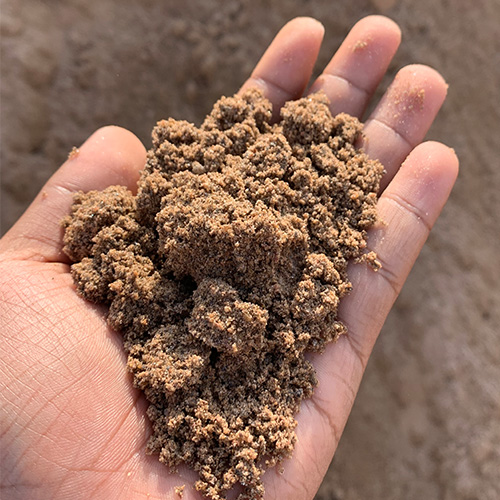Construction, the backbone of modern society, is an industry driven by innovation and efficiency. Every now and then, a new material or technology emerges that revolutionizes the way we build. One such game-changer is manufactured plaster sand, a humble yet critical component that is transforming construction practices around the world. In this article, we will explore the significance of manufactured plaster sand, its benefits, and how it is reshaping the construction landscape.
The Traditional Plastering Challenge
Historically, traditional plastering has been a labor-intensive and time-consuming process. It involves mixing sand and cement to create the plaster that is applied to walls and ceilings. While effective, this method comes with its share of challenges.
Firstly, the quality of natural sand can vary significantly from one source to another. This inconsistency can affect the strength and durability of the plaster. Moreover, natural sand can be scarce in certain regions, leading to increased transportation costs and environmental concerns due to excessive mining.
Secondly, traditional plastering is labor-intensive. Mixing, transporting, and applying the plaster requires a substantial workforce and can lead to delays and increased project costs.
The Rise of Manufactured Plaster Sand
Manufactured plaster sand, also known as crushed sand or artificial sand, offers a compelling solution to these challenges. It is produced by crushing hard stones or rocks into fine particles that mimic the characteristics of natural sand. Here’s how it’s becoming a game-changer in construction:
1. Consistency and Quality:
One of the most significant advantages of manufactured plaster sand is its consistency. Unlike natural sand, which can vary in composition, color, and quality, manufactured sand is produced under controlled conditions, ensuring uniformity. This consistency translates to better and more predictable plaster quality, leading to structurally sound and aesthetically pleasing walls.
2. Abundant Supply:
Manufactured plaster sand is not subject to the geographical limitations that natural sand faces. It can be produced locally, reducing the need for long-distance transportation and minimizing the environmental impact associated with sand mining.
4. Environmental Sustainability:
The production of manufactured plaster sand is more environmentally sustainable than mining natural sand. It reduces the strain on riverbeds and ecosystems caused by sand extraction. Additionally, the use of manufactured sand in construction contributes to a smaller carbon footprint.
5. Versatility:
Manufactured plaster sand is highly versatile. It can be used in various construction applications, including plastering, concrete production, and even in the production of precast concrete elements. Its uniform particle size ensures it can be easily incorporated into different mixes, providing consistent results.
6. Cost-Effective:
While the initial cost of manufactured plaster sand might be slightly higher than natural sand, its numerous benefits translate into long-term cost savings. Reduced labor costs, minimized project delays, and the elimination of the need to import sand from distant sources all contribute to a more cost-effective construction process.
7. Compliance with Standards:
Manufactured plaster sand meets the required standards for construction materials. It is engineered to provide the necessary strength and durability, making it a reliable choice for builders and contractors.
Real-World Applications
The impact of manufactured plaster sand can be seen in a wide range of construction projects. From residential buildings to commercial complexes, this innovative material is transforming the way we construct our infrastructure. Here are a few examples of how it’s being used:
1. Residential Construction:
In the residential sector, manufactured plaster sand is streamlining the process of interior and exterior plastering. Its consistent quality ensures smooth and even finishes, enhancing the overall aesthetics of homes.
2. Infrastructure Projects:
Major infrastructure projects, including bridges and roads, benefit from the use of manufactured plaster sand. Its reliability and strength make it a preferred choice for concrete mixes in these critical applications.
3. Green Building Initiatives:
As sustainability becomes a central focus in construction, manufactured plaster sand aligns with green building initiatives. Its reduced environmental impact and efficient use of resources make it an eco-friendly option for builders aiming to achieve sustainability goals.
Challenges and Considerations
While manufactured plaster sand offers numerous advantages, it’s essential to address some potential challenges and considerations:
- Quality Control:
To fully realize the benefits of manufactured plaster sand, it’s crucial to ensure that it meets the required quality standards. Adequate quality control measures should be in place during production and transportation.
- Availability:
The availability of manufactured plaster sand may still be limited in some regions. However, as its popularity grows, production facilities are likely to become more widespread.
- Cost Variation:
The cost of manufactured plaster sand can vary depending on location and production methods. It’s essential for builders to assess the cost-effectiveness based on their specific project requirements.
Manufactured plaster sand is undoubtedly a game-changer in construction. Its consistent quality, reduced environmental impact, and cost-effectiveness make it a valuable addition to the construction industry’s toolkit. As we continue to seek innovative ways to build safer, more sustainable, and efficient structures, manufactured plaster sand stands as a testament to our ability to adapt and improve construction practices. It is a key player in reshaping the future of construction, one grain at a time.



